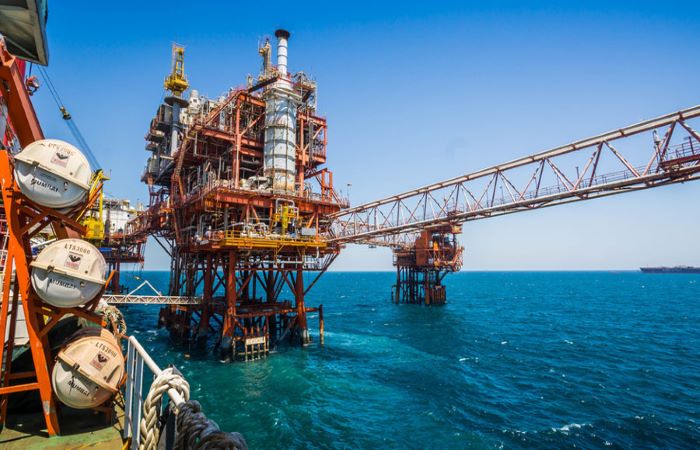The short answer is ‘No’.
In March this year, union minister Dharmendra Pradhan published an article. Most of the piece, titled Why India Needs A New Energy Roadmap, listed the Bharatiya Janata Party-led National Democratic Alliance (NDA) government’s efforts to make India a gas-based economy.
The government, wrote India’s petroleum and natural gas minister, wants to take India towards renewables. The country, however, is at a stage in its “developmental cycle” where it cannot exit fossil fuels entirely. And so, he wrote, the NDA is trying to “use least-polluting fossil fuels to complement the shift to renewables”.
This fossil fuel is gas. Under Prime Minister Narendra Modi, Pradhan wrote, the NDA is “taking policy initiatives, revamping policies and building next generation infrastructure” to make India a gas-based economy. The first stage in this transition would increase the share of gas in India’s energy mix from the current 6.5% to 15% by 2030.
Accordingly, he wrote, India has linked domestic gas prices to global gas benchmarks, added LNG terminals, accelerated work on pipeline grids, auctioned out more city gas distribution (CGD) licences – at last count, these spanned over 400 of India’s 739 districts and about 70% of the population. More recently, the NDA has announced it will set up a gas exchange and rationalise pipeline tariff.
India’s pink papers carry reports of yet more developments. Petronet LNG, owned by public sector oil companies, is back in talks with USA’s Tellurian to pick up equity – which will entitle it to long-term gas supply. GAIL (Gas Authority Of India) is now buying gas from Gazprom. Old supply contracts – like the one with Qatar – continue.
Private companies are forging alliances as well. Real estate major Hiranandani is getting gas from Russia’s Novatek. Even Total has invested in Adani.
Gas As A Bridge
Much of what Pradhan wrote fits with prevailing energy sector orthodoxy. In global energy circles, gas is considered a bridging fuel. On one hand, even as GHG emissions trigger alarms, renewables are making limited progress. “Energy demand is not limited to power generation,” an energy researcher tracking gas at The Brookings Institution, New York, told CarbonCopy. “Power is just one-third of all energy demand. The rest is transport, industrial and household use.”
With renewables making larger inroads in power generation, other sectors have continued to rely on fossil fuels as before – accounting for much of the 100 million barrels of oil produced each day.
Given this backdrop, gas is seen as a transition fuel, one that can help transport, industry and households limit their emissions. Some of these claims are contestable. While gas releases relatively less particulate matter and carbon dioxide during combustion, the methane it leaks during extraction and transport is a powerful greenhouse gas. Its benefits are more local – like reductions in smog and local air pollution – than planetary.
It’s more incontrovertible that gas is an easier fuel to pivot to. Take India’s transport sector. It will struggle to shift directly from petrol and diesel to electric vehicles. Charging stations will take a long time to become as ubiquitous as India’s 70,000 gas stations. In addition, the country sells 4.5 million cars a year. Retooling this supply chain – or creating a new one for electric vehicles – will take time.
In contrast, car engines can be made to run on CNG for as little as Rs35,000-40,000. Gas dispensers can be added to petrol stations. Unlike electric vehicles, whose batteries take 3-5 hours to recharge, it takes minutes to tank up on gas. As a bonus, gas is not only available in plenty, it is also cheaper than heavily taxed petrol and diesel.
It is similarly easier for households to switch from LPG to PNG and factories from coal/furnace oil to gas than to switch to electricity.
Such a switch, since gas is cheaper than oil, will also reduce India’s import bill.
And Now, The Paradox
And yet, beneath this flurry of announcements and deals, India’s gas sector is in trouble.
Right across its value chain — domestic exploration, LNG terminals that receive imported gas, the pipes that move gas, big industrial users, city gas distributors who supply gas to households, vehicles and smaller businesses – companies are struggling.
State-owned ONGC (Oil and Natural Gas Corporation) is posting losses from gas exploration. Barring the LNG terminals at Dahej and Hazira, capacity utilisation at the rest is low. Utilisation of gas pipelines is low as well.
On the demand side, no less than 25 GW of gas-based power plants lie stranded. A case has been made that city gas distribution will drive gas demand in India. These, however, are struggling as well.
The reasons extend beyond slowing GDP growth and slower accretion of gas infrastructure in India. The sector is beset by more fundamental problems.
Over the next two days, CarbonCopy will describe why India’s Gas bet will not play out – and the attendant economic and environmental costs that will ensue.
Part 2: Why India’s gas boom is running out of steam
Part 3: The four hidden risks lurking in India’s gas expansion plans
About The Author
You may also like
How India is shifting its nuclear power plans into high gear
“Government support needed for large-scale carbon-capture projects in India”
Cost-reflective tariff key to ending Tamil Nadu’s DISCOM woes
Energy crises, geopolitical tensions set stage for explosive climate talks
What Tata Steel’s attempts to decarbonise tell us


